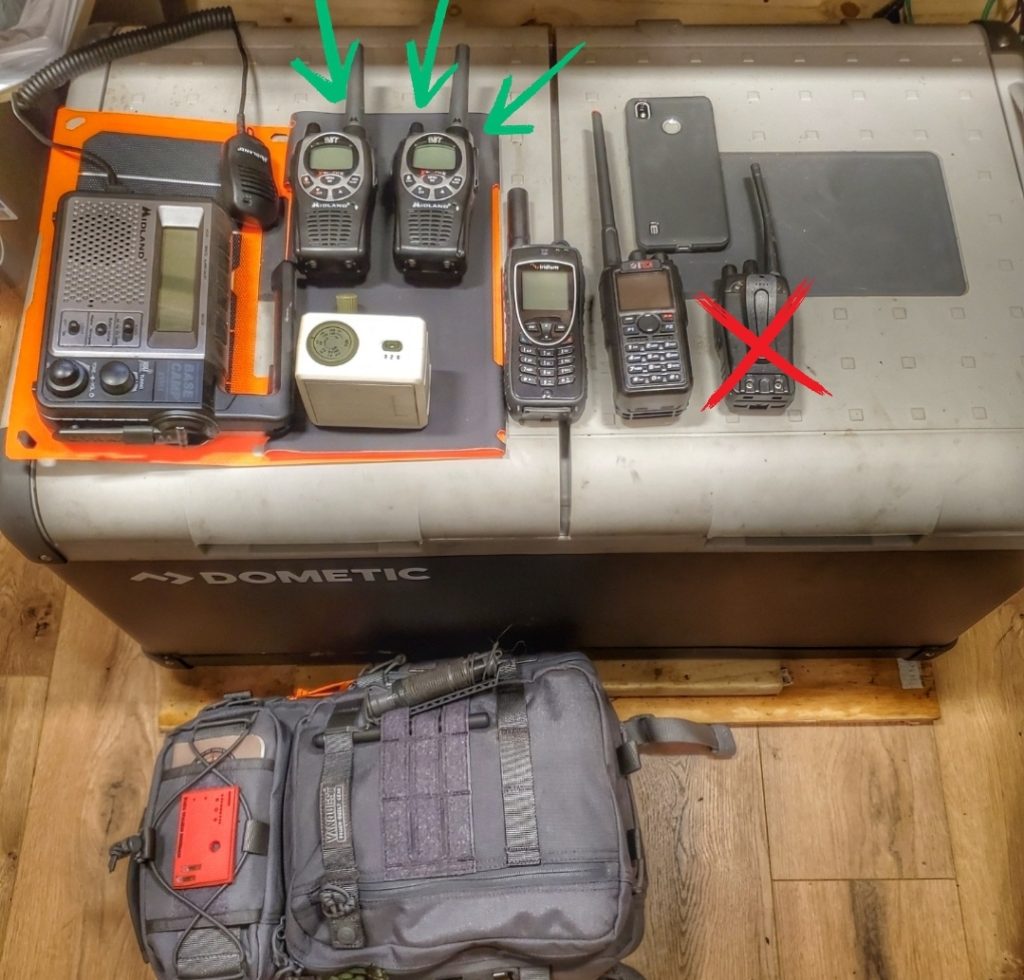BLUF: Understanding the difference between the two common portable radio devices (FRS/GMRS) and how to use them is a vital step in the communication preparedness plan.
Communications can aid in routine emergency and disaster scenarios. Following a Life Altering Event (LAE) where crime, marauding, or vigilantism becomes commonplace, comms will be essential in maintaining defense through active operations and warnings.
For general purposes, we see portable radios as most directly related to neighborhood security and convoy operations. It’s a great way to stay in contact with key neighbors as part of a value-added community watch. It’s useful during roadtrips with family (or team members) in the event of a flat tire or giving out navigation reminders to other members.
Consider radio comms after a Life Altering Event such as widespread rioting that spreads to residential areas or in the case of the sudden need to bug out.
Let’s talk about the differences in FRS and GMRS.

Walkie Talkie (FRS)
Range/Reception: Poor (.25mi-8mi) | Cost: Low ($10-$200) | Ease of Use: Easy | License: Not Required | Primary Purpose: Send/Receive any type of message | Repeaters: Repeaters are not allowed
Synopsis
Great starting point for close comms and extremely cheap and easy to use, but if possible, upgrade to GMRS and get your license for its use. FRS radios or family radio service is a powerful but short-ranged service that you can use to communicate with your family within your house or camp site. This is a good option to add to your emergency survival kit because it is inexpensive and very easy to use which means that everyone in your group or family can use it.
FRS radios can also communicate with GMRS (general mobile radio service) as they share some frequencies. However, FRS two-way radios have their limitations as well, especially with range. Although tests showed that FRS radios can reach a range of 22 to 36 miles, this is only attainable during optimal conditions which is very difficult to achieve during disasters and emergency situations. So, while FRS radios are best used indoors or within your camp, it is still best to use more powerful radios like HAM to get more range and higher chance of outside communication.
Note: Baby monitors work the same way as a walkie talkie. You can use them to communicate between local households or even as an early alert system as they are equipped with voice activated VOX.
GMRS PORTABLE RADIO
Range/Reception: Good (0.5mi-14mi w/ repeater 15+mi) | Cost: Low ($30-$200) | Ease of Use: Easy | License: Required | Primary Purpose: Send/Receive any type of message | Repeaters: Repeaters are allowed
Synopsis
This is the most realistic contingency comms device for most scenarios. The range, ease of use, and price make it our choice for SHTF. You’ll need a license, but it’s worth it.
GMRS Radios may use 5 watts on 7 channels, 0.5 watts on 7 more channels, and 50 watts on repeater channels. GMRS handheld radios typically have two to five watts transmitter power. GMRS vehicular units transmit typically with ten to 50 watts. There is no limit on the ERP of GMRS stations operating on the primary channels. GMRS stations may transmit with no more than 5 Watts ERP on the seven “interstitial” frequencies (those shared with the FRS). Many GMRS radios can communicate through repeater stations for extended range (typically up to twenty miles or more, sometimes much more).
Note: Use channels 15-22 for a stronger signal over longer distances.
